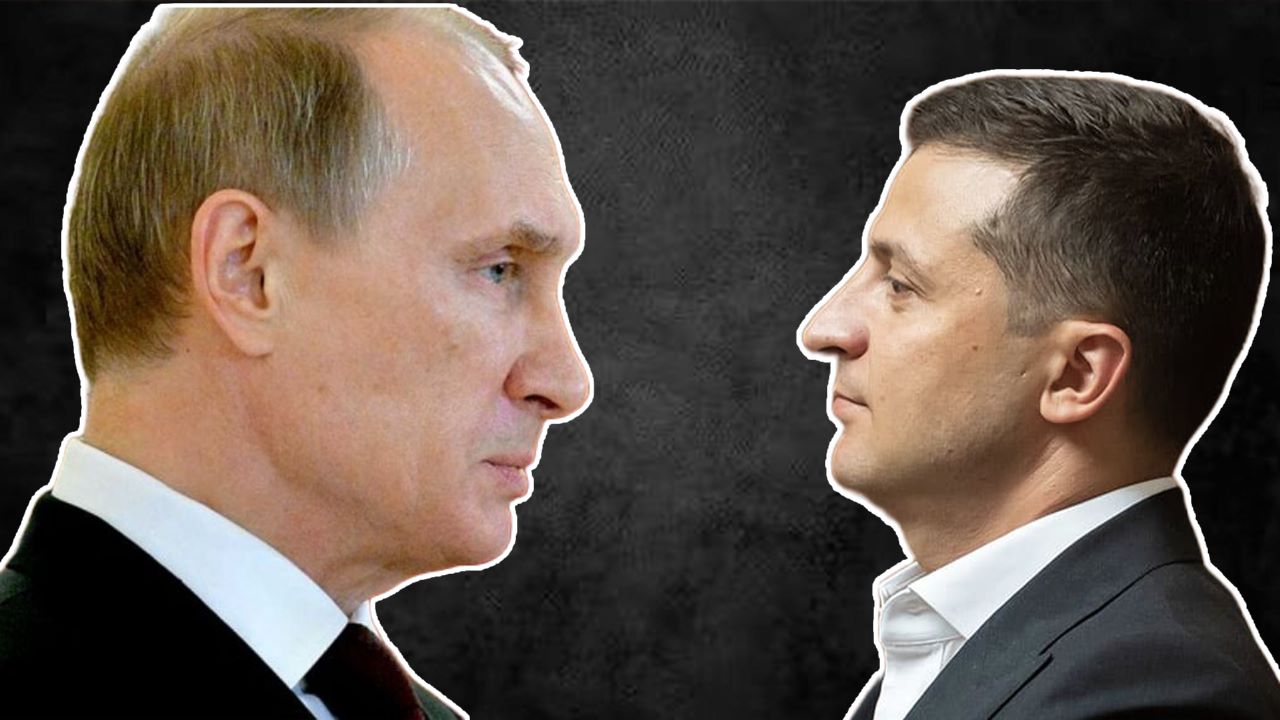The US could soon supply Ukraine with depleted uranium shells that could pierce Russian tank armor. This comes after a similar decision by the UK earlier this year that triggered an angry response from the Kremlin.
South Korea ‘Bets Big’ On US Military As Conflict Between ‘Democracy & Authoritarianism’ Likely To Erupt
The development was first reported by the Wall Street Journal (WSJ), which also stated that the Biden administration had been actively considering the possibility of delivering the depleted uranium shells to Ukraine for several months, mostly due to concerns about their effects on the environment and public health.
However, a representative of the administration reportedly claimed that there were currently no significant barriers to supplying the ammunition. The report also states that it is primarily due to their greater effectiveness that the Pentagon has insisted on delivering depleted uranium shells.
The US officials are believed to be of the opinion that the transfer of these highly lethal depleted uranium shells will aid Ukraine’s counteroffensive efforts and allow it to make significant gains in the south and east of Ukraine. Since the battle is largely fought on the ground, these shells will give Kyiv’s forces an edge in tank engagements.
However, according to some claims made by Russian military experts, Russia’s armored vehicles, including the T-14 Armata tank, include active protection systems and upgraded composite armor intended to lessen the threat posed by anti-tank weapons, especially those that employ depleted uranium.
In March 2023, the UK Ministry of Defense (MoD) confirmed it would provide Ukraine with armor-piercing rounds containing depleted uranium, which were essentially developed by the US during the Cold War to destroy Soviet tanks and could be fired by the UK-supplied Challenger-2 tanks.’
⚡️??USA intends to provide ??Ukraine with depleted uranium tank shells, — WSJ pic.twitter.com/oa4secV9te
— ??Ukrainian Front (@front_ukrainian) June 13, 2023
The announcement, however, triggered a fierce retaliation from the Kremlin.
Following the announcement that depleted uranium shells could soon be used against Russian troops and tanks, Moscow threatened to escalate the attacks against Ukraine and accused the West of providing Ukraine shells that have nuclear components.
The UK MoD staunchly denied these claims.
Putin: "We have a lot of depleted uranium munitions, we will use them in response. There is no need for their preventive use."
https://t.co/f7295tj7or pic.twitter.com/r8djKozG96— Victor vicktop55 (@vicktop55) June 13, 2023
After the recent US decision, Russian President Vladimir Putin said that Moscow would also use weapons with depleted uranium if necessary.
“We have a lot of such ammunition, with depleted uranium, and if they [the Armed Forces of Ukraine] use them, we also reserve the right to use the same ammunition,” Putin said.
However, this could wreak havoc due to the hazardous nature of depleted uranium. Depleted uranium is a byproduct of the uranium enrichment process, which is needed to create nuclear weapons. The announcement triggered an intense discussion among military and policy watchers who have largely denounced the move.
As previously explained by nuclear specialist and policy researcher Edward Geist of the RAND Corporation, the rounds have certain radioactive characteristics but are not enough to produce a nuclear reaction like a nuclear weapon.
Nonetheless, depleted uranium is incredibly dense, more than lead, making it highly desirable as a projectile even though it is significantly less potent than enriched uranium and incapable of igniting a nuclear reaction.
However, the use is especially dangerous as it could lead to very toxic effects on the civilian population as well.
The United Nations Environment Program says that the metal’s “chemical toxicity” is the biggest concern, and “it can cause skin irritation, kidney failure and increase the risks of cancer.” Additionally, it is viewed as a radiation health danger when inhaled as dust or shrapnel, making its use even more dangerous.
Stated simply, as Harvard International Review explains it, “Depleted uranium may pose a risk to both soldiers and local civilian populations. When ammunition made from depleted uranium strikes a target, the uranium turns into dust that is inhaled by soldiers near the explosion site. The wind then carries dust to surrounding areas, polluting local water and agriculture.”
This is reminiscent of when the United States and its allied forces allegedly entered Iraq and dropped depleted uranium and white phosphorous all over the country, wreaking havoc and causing devastation that could not be undone for several years to come.

When The US Used Depleted Uranium In Iraq
In 2003, the United States-led alliance launched a large-scale invasion of the Republic of Iraq. The invasion phase involved troops from the United States, the United Kingdom, Australia, and Poland and began on March 19, 2003, with aerial bombardment, with ground operations following right after.
Even though the UN inspection team led by Hans Blix had stated just before the invasion that it had found no evidence of the existence of WMDs, US President George W. Bush and UK Prime Minister Tony Blair claimed that the coalition’s goals were “to disarm Iraq of weapons of mass destruction [WMD], to end Saddam Hussein’s support for terrorism, and to free the Iraqi people.”
In the aerial operation conducted in its quest to invade Iraq, the US and its allies were accused of using depleted uranium and white phosphorous that had long-lasting effects on the landscape and the country’s people. Although these allegations were denied for a long time, it was confirmed in a report in 2014.
The adverse health effects that depleted uranium rounds have had on Iraqis are still being felt and yet the US keeps sending them out to countries as if they were candy. https://t.co/ddsLUn61Gn
— Séamus Malekafzali (@Seamus_Malek) June 13, 2023
A damning report published by the Dutch peace group Pax in 2014 concluded that US forces used depleted uranium (DU) bombs against Iraqi troops and civilian areas in violation of official advice intended to reduce needless suffering during battles.
The Dutch peace organization Pax was able to get coordinates showing the locations of approximately 10,000 DU rounds fired by US jets and tanks in Iraq during the 2003 war.
The data indicates that many of the DU rounds were shot in or close to populous regions of Iraq. The group claimed that at least 1,500 bullets were also directed against troops.
According to the study, this ran counter to US Air Force legal instruction from 1975 that DU weapons should only be employed against hard targets like tanks and armored vehicles. It also claimed that US forces often disregarded this instruction, which was intended to conform with international law by avoiding fatalities to urban residents and troops.
“Use of this munition solely against personnel is prohibited if alternative weapons are available,” the memo stated. This was for legal reasons “related to the prohibitions against unnecessary suffering and poison.” Over 300 sites were contaminated by over 1000-2000 tons of DU at the time, a very hazardous radioactive material.
The US military used depleted uranium in Iraq and it caused such horrific environmental destruction that babies are still born like this. Will @GretaThunberg condemn this or continue serving her imperialist masters?
It’s absolutely clear the US does not care about the lives of… https://t.co/VTsiPgI781 pic.twitter.com/m3A409mwMV
— شبير (@abolishnato) June 13, 2023
Several papers and reports published after the invasion stated that depleted uranium increased cancer rates among civilians and several congenital malformations in children.
Having said that, the threat of using depleted Uranium shells either by Ukraine or Russia is enormous and could wreak havoc on the battlefield as well as among civilians, according to military experts who expressed anguish at the announcement.
As for the United States, it has withheld the delivery of weapons like cluster bombs that also endanger the safety of civilians. However, after the shipment of DU shells is made, some observers and US lawmakers are confident that cluster munitions would also be on their way to Kyiv.
- Contact the author at sakshi.tiwari9555 (at) gmail.com
- Follow EurAsian Times on Google News




